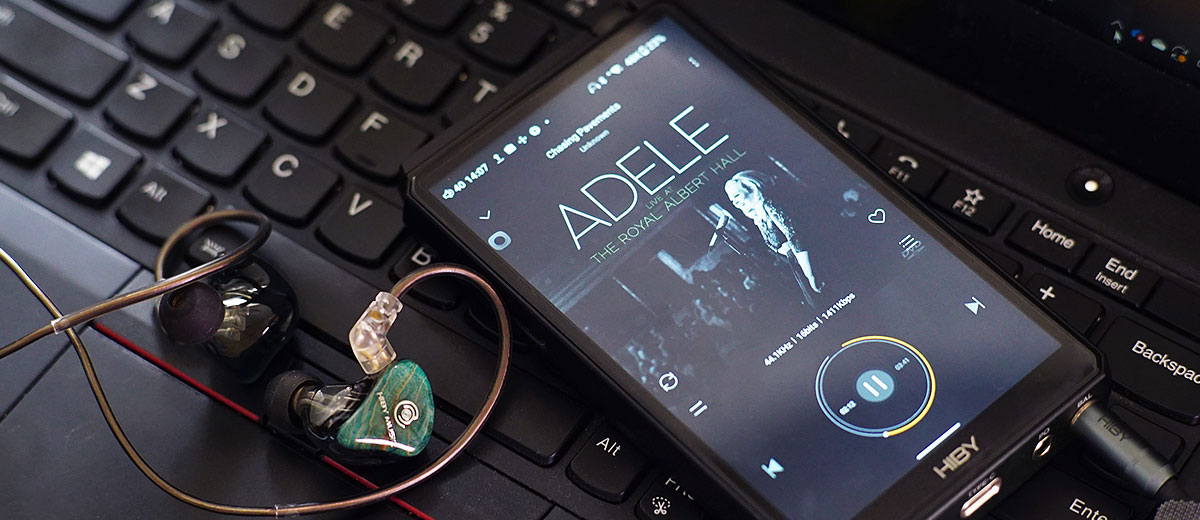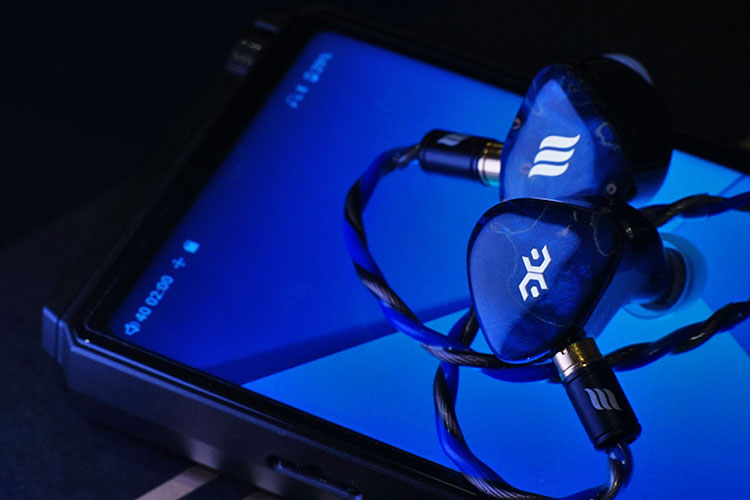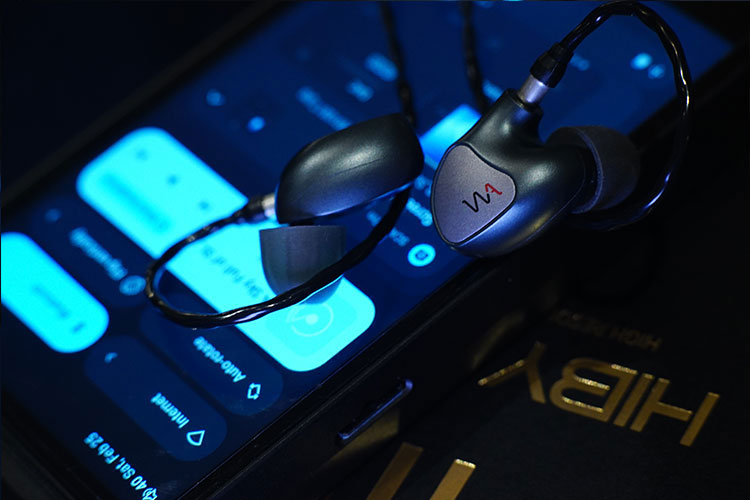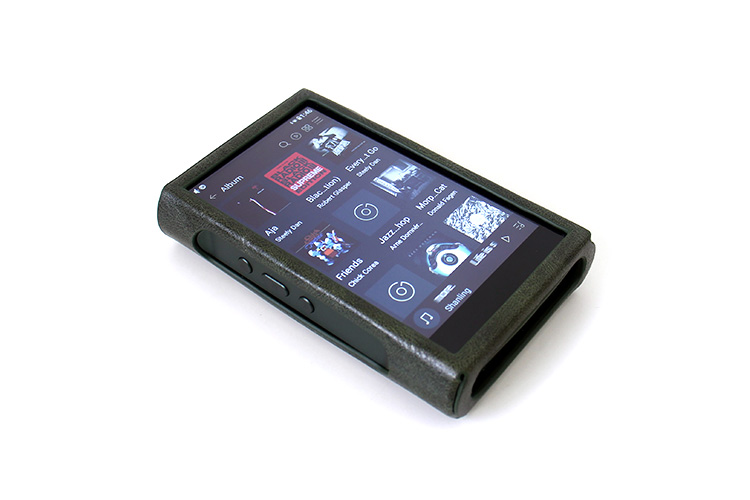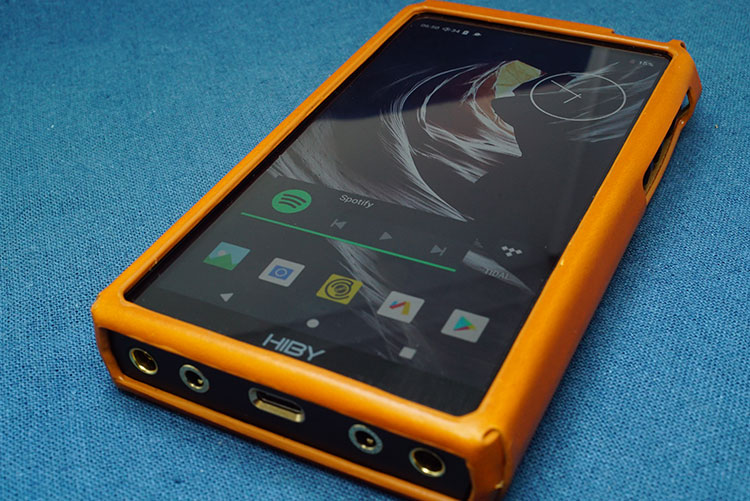Sound Impressions
Summary
The R6 III has been priced friendlier than the previous gen product and adopts a similar architecture to the R5 Gen 2 with Class A and Class AB switching.
The result is a slightly soft, M-shaped tuning that emphasizes the vocal body and clearly outlines the upper vocal frequencies for better transparency. The enhanced dynamics work well for streaming content and pop music and streamed content.
When switching to Class A mode, with higher impedance IEMs you can feel the image being firmer. With HiBy players there is always strong malleability using the onboard equalizing tweaks, and that could enhance the performance by a huge margin.
The R6 III has been burnt in for 3 weeks and the below impressions are given mainly with the 4.4mm output. The 3.5mm output is quite a bit softer to the point where I sometimes prefer my MacBook’s phone output.
However, when factoring in MSEB and other DSP filtering options the R6 III is a lot more flexible with the tuning and that does make some differences.
Timbre
Aside from a slight emphasis on the mid-bass and upper mids, the R6 III sounds rather neutral without overly leaning to either side or thickening a particular frequency range.
The bass has a small hint of warmth and the colorings make it forgiving with any tracks being thrown in. You can easily adjust the coloring and even make the R6 III sounds a lot cooler in tone with the MSEB function, which has all its options labeled in layman’s terms.
Unlike quite some other players that only provide graphical equalizers the R6 III is much more flexible in this department and can match various genres of music or different voices much more easily.
Staging & Dynamics
Staging on default settings without MSEB and filters feels slightly limiting as the midrange is forward sounding.
With some slight adjustment to the earphone’s character, the staging can be enlarged so as the speedy transient response, especially in the bass, can come through strongly. The vocal image is fairly separated from the backing and it can be enhanced by using the MSEB tweaks.
The overall resolution is satisfactory for the price and with just a minute or two of MSEB tweaks, the perceived output quality can be enhanced. There is enough power to give most IEMs a good push, though the output power can only drive small headphones that are very sensitive.
Synergy
Efficiency
The new R6 III gets even friendlier with sensitive earphones as the background noise is more suppressed compared to the last generation.
At the highest gain level, the background is still very quiet. Factoring in the output power the noise control is satisfactory so the R6 III is a better match with sensitive earphones such as the Elysian x Effect Audio GAEA, than higher impedance IEMs/headphones.
Power
That said, the output power on the R6 III is sufficient for quite some IEMs with higher sensitivity or low impedance ratings though when it comes to those with the less sensitive ones such as the recently reviewed Westone MACH 20, it may not sound as dynamic as heard on some other powerful DAPs.
When turning on the MSEB tweaks, it may give you the impression that it is more powerful than its rated output since the bass response can be manipulated or enhanced for dynamics.
However, to really pump up the output power an external amplifier will need to be connected to the 4.4mm BAL LO or the 3.5mm LO which can yield much better performance than on the player’s own outputs.
Pairings
The HiBy R6 III has sufficient power to drive some IEMs with good dynamics. On its Class A output, it is able to give a firmer, more distinct vocal image also.
When paired with the Westone MACH 50 rated at 32Ω and 110dB @1kHz SPL the R6 III manages to drive its bass with excellent impact as well as maintain an airy soundstage with satisfactory levels of separation.
Testing with the Crystal 6 IEM from HiBy it is an interesting match that delivers a well-articulated midrange and sweetly rolled-off treble. The moderately fast bass decay sounds quite relaxing though you could adjust the MSEB settings to boost resolution and clarity.
The resolution on this combo is satisfactory and there is room for the Crystal 6 to sound more dynamic and resolving when there are stronger swings in the output.
With the Effect Audio GAEA which is more sensitive than the other two, there is better speed and air in the bass, while the midrange frequencies sound more natural and layered and the vocal is given more presence.
Transients in the upper register are more clearly presented so it works well with pop and female vocals with sharper voices as the amount of vocal body is on the lighter side.
Select Comparisons
FiiO M11S
$499
Technical
The FiiO M11S uses dual ES9038Q2M for decoding which is the same as the R6 III. It runs Android 10 on Snapdragon 660 and supports MQA 8x unfold which is not as advanced as the R6 III.
However, it can output as much as 670mW which is quite a bit higher. Similarly, a 720P screen is used and with a 5300mAh battery, the M11S can playback for up to 14 hours.
Design
Both players have a black theme and are constructed in a full metallic housing. I personally dig the design on the R6 III more as it has cooler contour lines and the digital volume pod on top is handier when you put the DAP in the pocket.
The M11S has a multi-function button on the side near the volume pad which could be its advantage, and both DAPs can be controlled over the phone.
Performance
The power on M11S’s output is nearly 50% more than on the R6 III though when compared, the R6 III on Class A mode doesn’t feel much weaker in this department even when it pushes the mid-bass more forward.
Resolution on both DAPs is similar and without turning on MSEB, the M11S may sound slightly more forward in the bass, and the R6 III comparatively more balanced in its performance.
The stock tuning on both players has some similarities and both favor playing back pop songs, in particular the R6 III which has the vocal image more defined.
The M11S’s faster bass response and stronger power keep the output cleaner, while the R6 III feels more controlled in the low end and more delicate in the midrange.
With MSEB to tweak the bass response speed and Class A option the R6 III is much more versatile in matching IEMs of different sound signatures and can power sensitive IEMs to sound as dynamic and responsive as on the M11S.
Shanling M3 Ultra
$479
Technical
The Shanling M3 Ultra uses the Snapdragon 665 as well though it is matched with Android 10 just like the M11S.
A pair of RT6863 is used for the amping stage and dual ES9219C DACs are used for decoding, achieving 260mW max on its balanced output. A total of 20.5 hours of playback is achieved on its 3500mAh battery.
Design
The M3 Ultra follows Shanling’s usual rounded design language and is the thickest among the three. Although it is quite small in size it is 199g in weight which feels quite hefty.
The screen is 4.2″ in size which feels quite a bit smaller than the R6 III, and the M3 Ultra does not have a dedicated LO jack for both BAL and SE outputs.
The overall UI/UX experience is more appealing on the R6 III with more customization and a newer generation OS.
Performance
The M3 Ultra delivers a 260mW to a 32Ω load which is ideal for sensitive IEMs. With less sensitive gears you can clearly detect the power difference as in firmness in the lower register as well as how stereophonic the vocal image is rendered.
With 3.5mm terminated earphones the technical performance of the two DAPs is head-to-head. However, in terms of coloration, the M3 Ultra sounds smooth and nicely layered, slightly fuller in the mid-bass. The R6 III is tuned to be more refined and resolving especially in the midrange and in the upper frequencies.
On a 4.4mm phone out, the R6 III is more capable of defining and replaying the midrange frequency more swiftly and with a stronger resolution, even without relying on MSEB options.
The two products here are clearly positioned to meet different needs and if you are looking for long playback hours for sensitive IEMs, then the M3 Ultra could be a good match.
The R6 III offers much more flexibility in user tuning and the output power is quite a lot stronger as well. The overall decoding quality feels marginally better compared to the M3 Ultra.
HiBy R6 2020
Technical
The R6 2020 was released a few years ago and features Android 9, 4GB of RAM, Snapdragon 660 SoC, and a 1080p display. With a few years of enhancement and a new iteration of Android OS, the R6 III’s UI now looks much more refined and customized.
If it is just the multimedia experience, then the R6 III is miles ahead with the faster hardware whereas the new 720p feels just slightly less sharp than the 1080p screen on the R6 2020. That may however help lengthen playback hours and let more power go into amplification.
The biggest difference is the amplification stage and power as the R6 III mimics the design of the R5 Gen 2 and focuses more on tonality than output figures.
Design
The design of the R6 III is derived from the older generation R6 2020 so they look pretty much similar.
In practical use, heat dissipation is enhanced on the R6 III, so it doesn’t get hot playing DSD for hours and the older generation R6 2020 gets warmer quicker.
When looking at the UI design, the graphical elements and the swiping control experience are enhanced on the newer and more affordable R6 III which makes it a nicer multimedia player option.
Performance
The R6 2020 has 750mW of max output while the R6 III maxes at 405mW on 4.4mm BAL out. In practice, the R6 2020 does sound more powerful but with MSEB DSP on the difference is much shortened when listening outdoors.
That said it is suggested to pair more sensitive IEMs for the R6 III for stronger resolving power and firmer bass. With IEMs of lower impedance, it is able to deliver a more natural stage and swifter articulation, more fun than the R6 2020 which is optimized for technical performance.
I find the tuning on the R6 III more mature and euphonic though if you are using medium-sized cans on the go, the power on R6 2020 would be more suitable.
Our Verdict
The HiBy R6 III brings back the appealing Class A/AB switching function and continues to feature the highly versatile MSEB functionality to fine-tune the audible performance.
The output power on paper may feel insufficient for higher impedance IEMs but practically it delivers decent bass layering and satisfactorily defined transients, working well with sensitive gears to sound dynamic and neutral, with a good sense of control as well.
I recommend trying to tweak the output with the MSEB menu, which helps enhance the overall tonality and synergy without causing any audible distortion.
Overall, the R6 III is an extremely smooth and enjoyable multi-media player with the most up-to-date OS, useful user tuning features, and a rather neutral base tuning.
It is an affordable and engaging choice for those who are seeking a fast multi-media player or for more advanced users who have external amplifiers to pair with the device.
HiBy R6 III Technical Specifications
- MCU: Snapdragon 665
- DAC: ESS9038Q2M x2
- WiFi: 2.4GHz, 5GHz
- Bluetooth: BT5.0
- USB version: USB 3.1
- RAM: 4GB, ROM: 64GB
- Micro SD card: Support up to 2TB
- Battery: 4500mAh/3.8V
- Charging time: <5Hrs(0%-100%)

